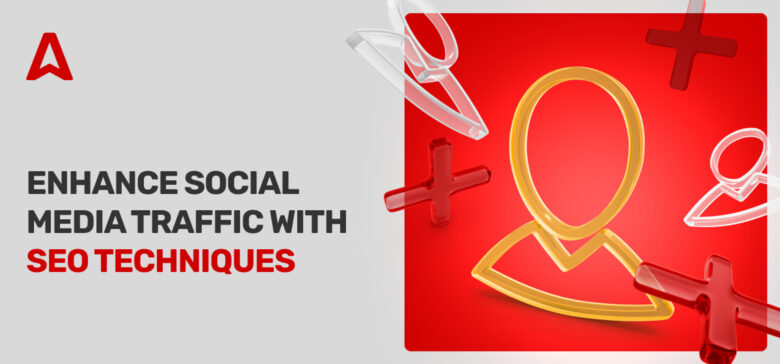Search engine optimization (SEO) involves tweaking your website’s content to rank high on search results. Social media marketing involves promoting your posts on social platforms like Instagram and Facebook to get high engagement. Combining social media and SEO helps your blog or monetization platform attract valuable traffic and boost earnings. This article will explain how both strategies work in tandem to increase your website’s appeal.
What is social media SEO?
Social media SEO involves optimizing your posts to rank high on search results. It borrows techniques from website SEO and applies them to social media profiles with the same goal – to get engagement from the ideal target audience.
For example, if you run a YouTube channel, you can use effective SEO to attract viewers and convert your viewership into money. Below is a case study of a YouTuber who used SEO optimization to boost his video traffic and then monetized the traffic by sending it to a website with Adsterra ads. He gets paid when people click on an ad on his website, which gets considerable traffic via his YouTube channel. Social media traffic can be lucrative if you play your cards right.
What is the connection between SEO and social media?
SEO strategies include using relevant keywords in your posts, appealing meta descriptions and headlines pointing to users’ needs, high-quality images with precise alternative descriptions, cross-linking, etc. These strategies complement social media promotion to boost your brand engagement.
For example, when you create content on YouTube, it’s advisable to use relevant keywords in your description. Research the words and phrases your audience often searches for and include these words in your video description. This improves the chances of your video getting suggested when someone searches for the keyword.
Below is a relevant case study of a blogger who earned $1,000+ monthly by applying SEO techniques to his Facebook and X (formerly Twitter) pages to draw valuable traffic.
How SEO helps social media?
SEO techniques improve visibility and engagement for your social media pages. Using relevant keywords and creative titles reinforces your social media messaging. Just as you’d seek backlinks for a website, seeking mentions and tags for your social media page spreads awareness and boosts engagement. Optimizing your social media profile with relevant information is another productive way to build engagement.
Why is Social Media Important for SEO?
SEO is very competitive, with thousands of websites competing for the first page of search results. Social media can increase your website’s traffic and improve its chances of ranking high on search engines. If you keep posting high-quality social media content that leads people to your website, search engines notice and increase your rankings.
With effective SEO and social media marketing, you’re off to a good start and have better chances of beating your rivals for valuable traffic.
Adsterra provides opportunities to earn considerable income from your website traffic. You can monetize your social media traffic and get rewarded for your content creation efforts.
What are the best platforms for social media SEO?
There are endless social media platforms that can boost your website traffic, but we’d like to highlight some of the best ones, including YouTube, Instagram, Facebook, X, and LinkedIn.
1. YouTube
YouTube videos usually rank high on Google search results. YouTube’s internal search engine is also very popular and enables channels to attract new viewers. Using the right images, headlines, and descriptions go a long way in driving traffic to a YouTube channel, whether from Google or YouTube’s internal search queries. It’s the perfect example of harnessing SEO for social media engagement.
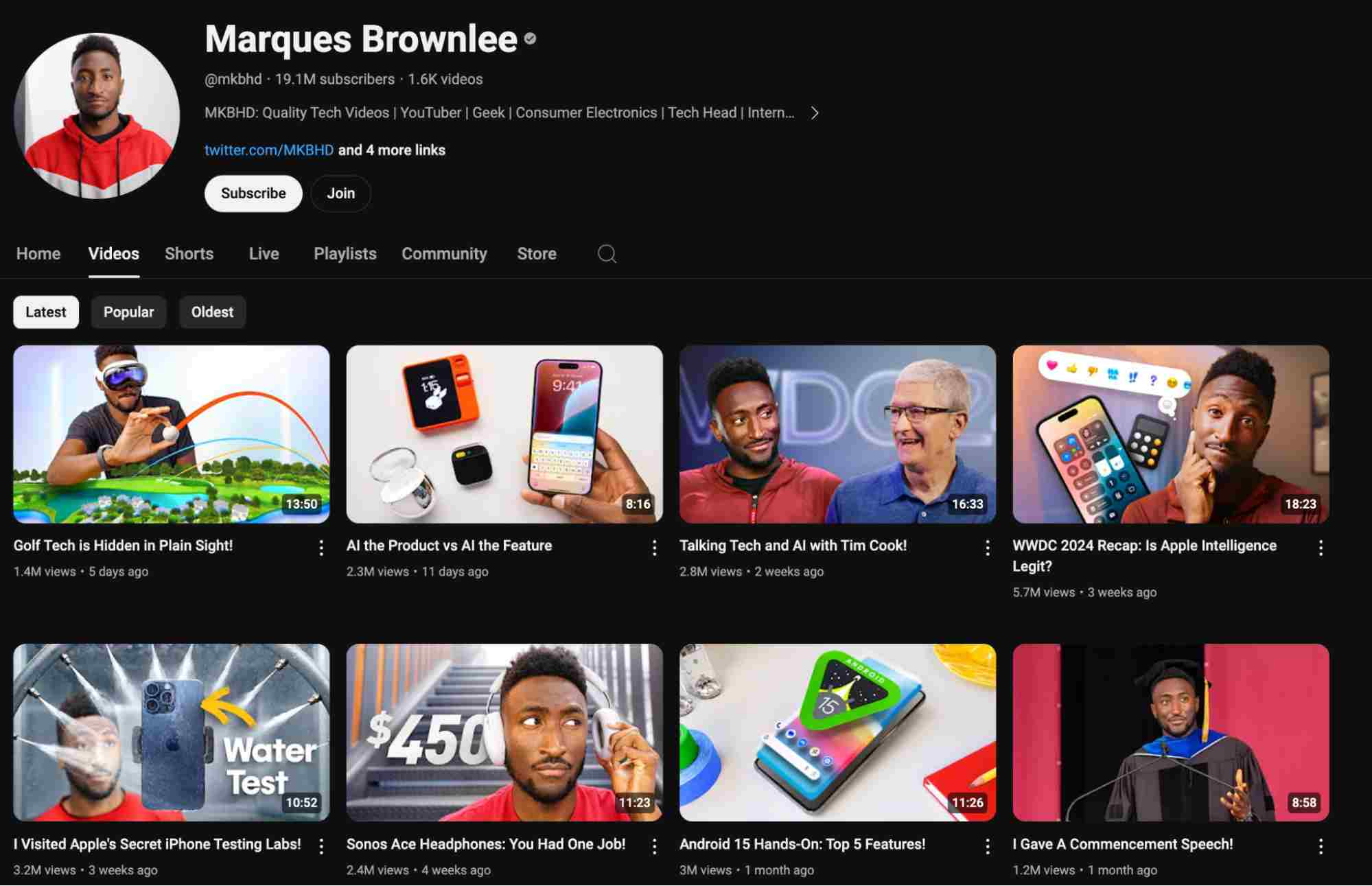
Example of an effective YouTube SEO strategy, with precise video headlines, a succinct profile description, and external links in bio.

An example of YouTube SEO: the creator used relevant keywords and search terms to boost their video’s rankings when people search for terms related to “fixing Fortnite DX11 feature level.”
2. Instagram
Instagram is the go-to app for endlessly scrolling through attractive photos and videos. Many brands have Instagram pages to engage with customers, and SEO tactics come in handy. Choosing an appropriate username and including relevant keywords and locations in your Instagram bio goes a long way in attracting visitors to your page and website.
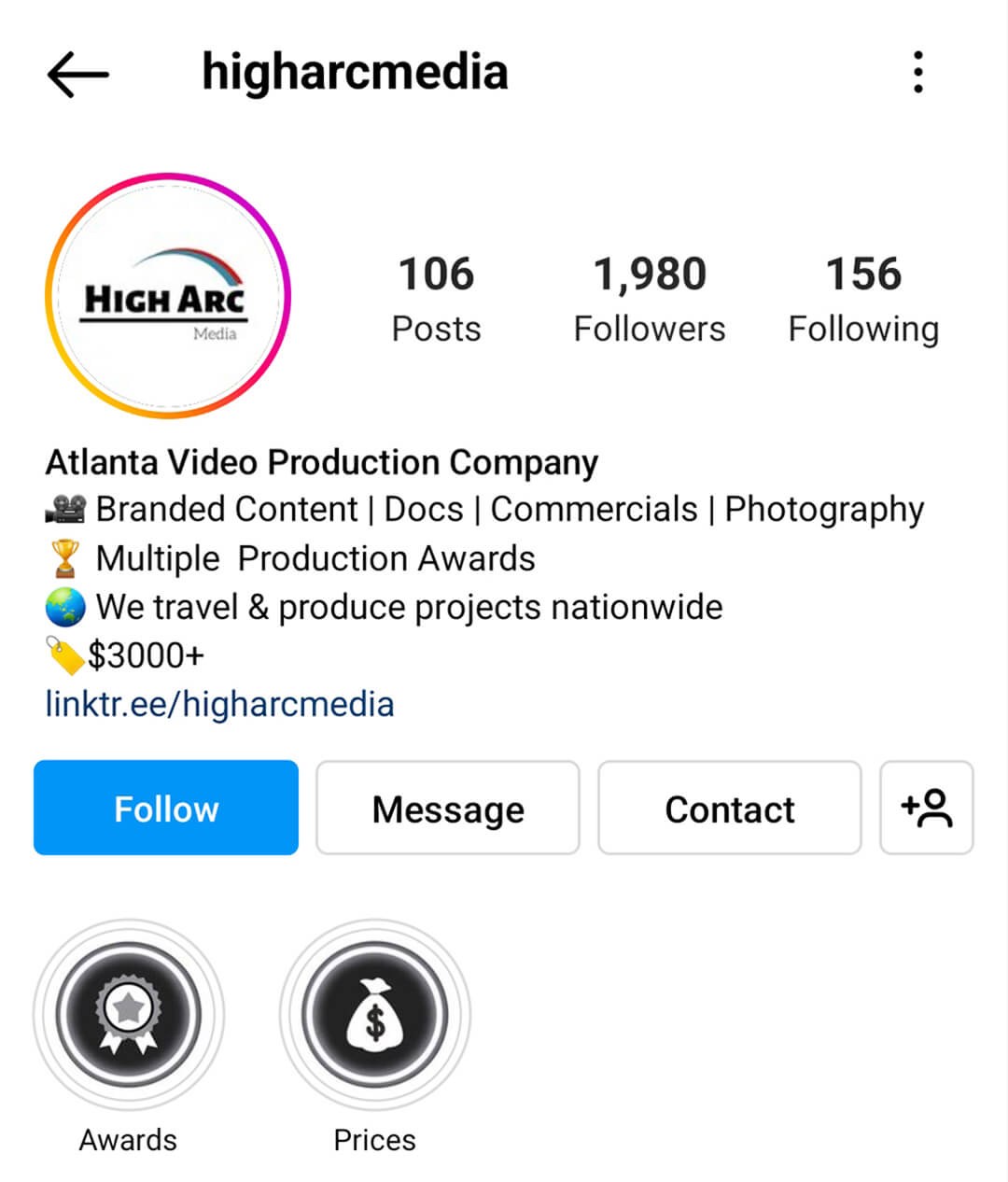
3. Facebook by Meta
Facebook is the most popular social media platform, with over 3 billion active users. When Facebook users search for specific terms, the app suggests pages and profiles with those keywords. Any website or blog with a Facebook page needs to optimize its content to attract better engagement. Optimization includes using popular keywords in your niche and talking about trending topics. Keep posts brief and concise, shorten your links to make them easier to remember, seek mentions from other pages, and use trending hashtags.
4. X
X is another well-known social platform where internal search queries run the show. SEO techniques help X brand pages rank high, including posting about trending topics, having a simple username, including trending hashtags in posts, and incorporating relevant keywords in the page bio.
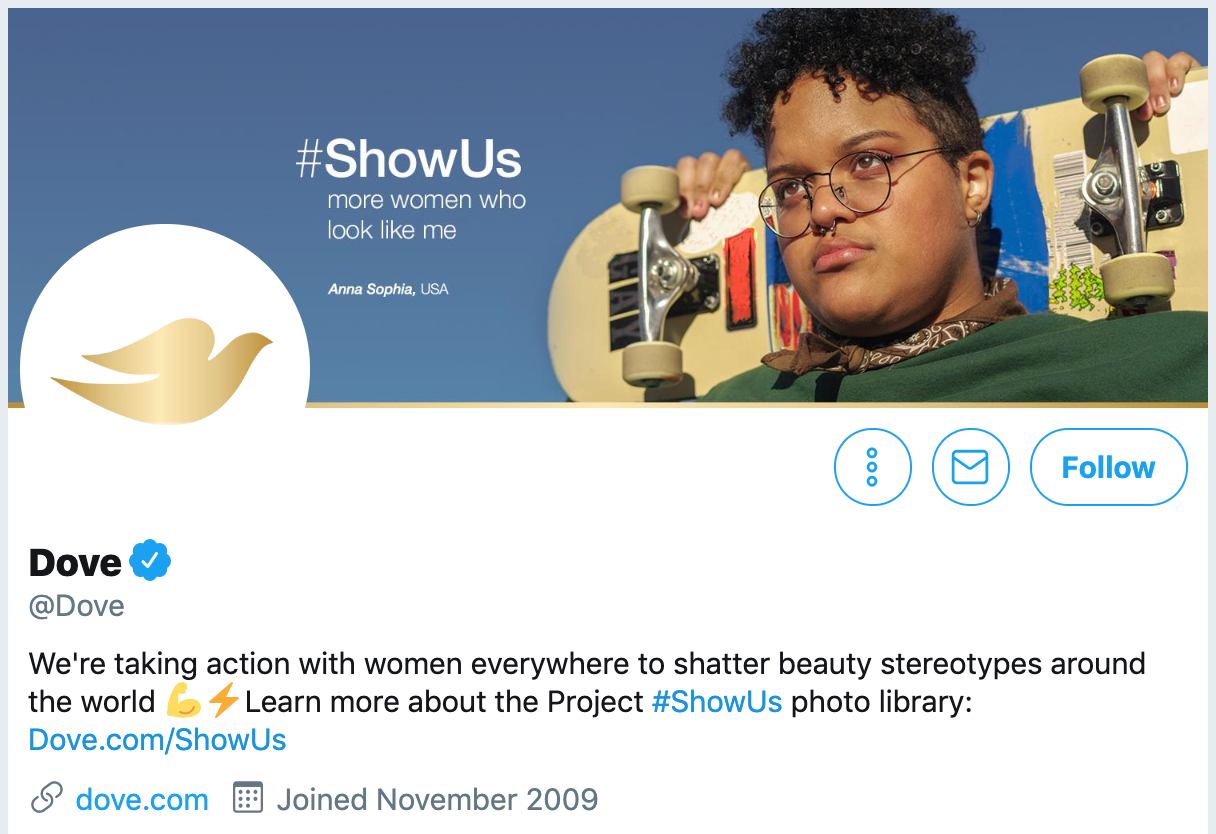
“I search for trending topics on Twitter and then make news out of them. I convert celebrity videos or pictures into full stories that people will enjoy reading. One of my primary rules is to make sure the news is really hot – it almost guarantees many views. I check trending topics using hashtags on Twitter, Instagram, and Facebook.“
That’s how Achile Anne, a blogger and Adsterra publisher, has found a way to create optimized content that will attract multiple clicks. Her blog monetization case study is a source of little-known but actionable tips.
5. LinkedIn
LinkedIn is a business-oriented social networking platform. Publishers can use LinkedIn to generate traffic for their websites, especially when they are business-oriented websites. For example, a finance news website can post regularly to LinkedIn to get views from its target audience. Like with other social platforms, the key is using popular keywords, creating engaging content people would share, seeking mentions from other pages, and writing about trending topics.
Social media SEO strategies
1. Add social share buttons on your website
Your website should have social sharing buttons on articles and blog posts. This way, if someone loves your article, they can easily share it to their social circles and boost awareness for your brand.
2. Use relevant keywords
Your website’s articles and content should contain relevant keywords for your target audience. Research the trending keywords in your niche and write articles related to them. SEO tools like Semrush and research tools like Google Trends enable you to monitor and incorporate keyword trends into your website.
The more relevant keywords you incorporate, the better your chances of getting organic search and social traffic. Ensure the keywords flow naturally in the article instead of stuffing them in odd positions – the latter attracts punishment from search engines and social platforms.
3. Build backlinks
Backlinks are links from other websites that direct traffic to your website. Search engines pay attention to backlinks because they indicate your website has valuable content people are willing to direct their audience to. It’s advisable to build backlinks from other websites in your niche via backlink exchanges or guest posting.
4. Optimize your social profile
Consider your social media pages as extensions of your website. As you constantly optimize your website’s keywords and titles, you should do the same for your social media pages.
Use a high-quality profile picture and an easily searchable username. Your bio should include a clear description of your business and a link to your website. Announce new releases and updates on your social media pages and reply to people’s comments. These activities help you build long-term relationships with your social media followers.
A good optimization example is using Taplink to create a customizable landing page for your social media profile. Then, you can share this link in your Instagram, Twitter, or Facebook bio and get conversions. Most social networks let you place only one link in your bio. But, Taplink lets you bypass this obstacle by placing multiple links on your landing page.
Another example involves using creative headlines for your YouTube videos, e.g., “Things you didn’t know about _____,” “I tried _______ and here’s what happened,” or “The reality of ______.” These techniques, borrowed from traditional SEO, improve YouTube engagement. It also works for other social media platforms like Facebook, X (Twitter), Instagram, and Reddit. SEO and social media marketing are birds of the same feather, working together to boost your brand awareness.
5. Seek online mentions
Your social media posts build a positive relationship with your audience. You can make the relationship even better by getting online mentions from other social media pages. When others tag your page in their posts, they spread the word about your brand and help you get new followers. You can also seek mentions (via backlinks) from blogs and websites that are similar to yours.
6. Collaborate with social media influencers
Influencers are people with large social media followings and prestige in various niches. Influencers wield substantial power over purchasing decisions, so you can pay them to advertise your brand. Influencer mentions generate buzz for your brand and open up long-term customer relationships.
7. Include author bios
Include biographies for each author on your website. This way, when someone reads a post, they can see information about the author and their social media profiles. Author bios boost credibility and search engine rankings for your website.
Google pays attention to E-E-A-T (Experience, Expertise, Authoritativeness, and Trustworthiness) factors when ranking your website. A detailed author bio tells Google that the article comes from a trusted, skilled, and experienced source, which leads to higher rankings.

8. Boost social media posts
You can pay to promote your social media posts and broaden your audience. You’ll choose your audience’s exact demographics and interests, and Instagram, Facebook, etc., will show your posts to this audience. Social media promotion can help you gain a considerable following and higher product sales. As more people visit your social media page, they get directed to your website, increasing its traffic and reputation with search engines.
9. Get a social verification badge
Social media verification boosts your brand’s credibility and trustworthiness. When your profile has a verified checkmark, people are more likely to engage with your posts and buy products you recommend.
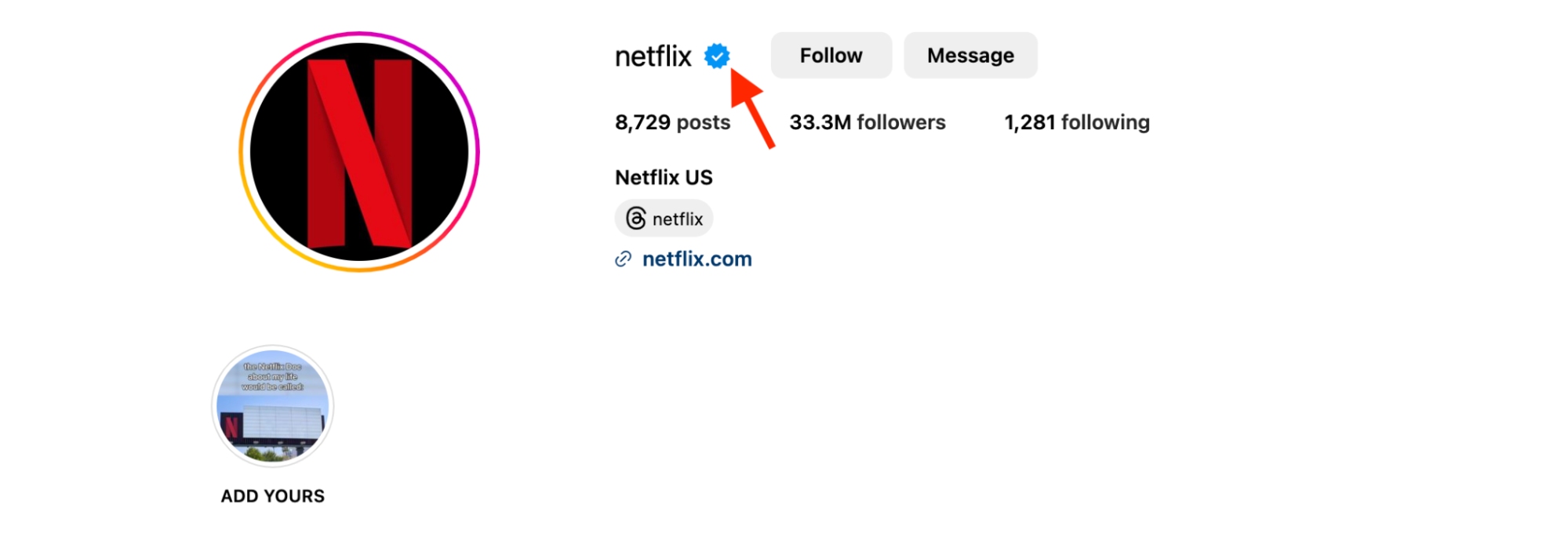
Each social media platform has its unique eligibility criteria for a checkmark. You can check your platform’s requirements and apply for a verification badge if qualified.
Sample social media SEO strategies
1. Brilliant.org: YouTube influencer marketing
Brilliant.org is an online educational platform focused on mathematics, science, and engineering topics. It features dozens of free and paid courses taught by professionals.
What better way to promote an online course provider than on a YouTube channel revered by engineering enthusiasts? That’s why Brilliant.org partnered with B1M, the most popular YouTube channel dedicated to construction. B1M produces engaging videos about various construction projects and has over 3 million subscribers.
Under their partnership, B1M frequently promotes Brilliant.org’s engineering courses in its videos. This is a perfect match, as people curious about construction projects get recommendations for online courses to broaden their knowledge. This partnership has boosted Brilliant.org’s website traffic and helped it reach 4 million + registered users.
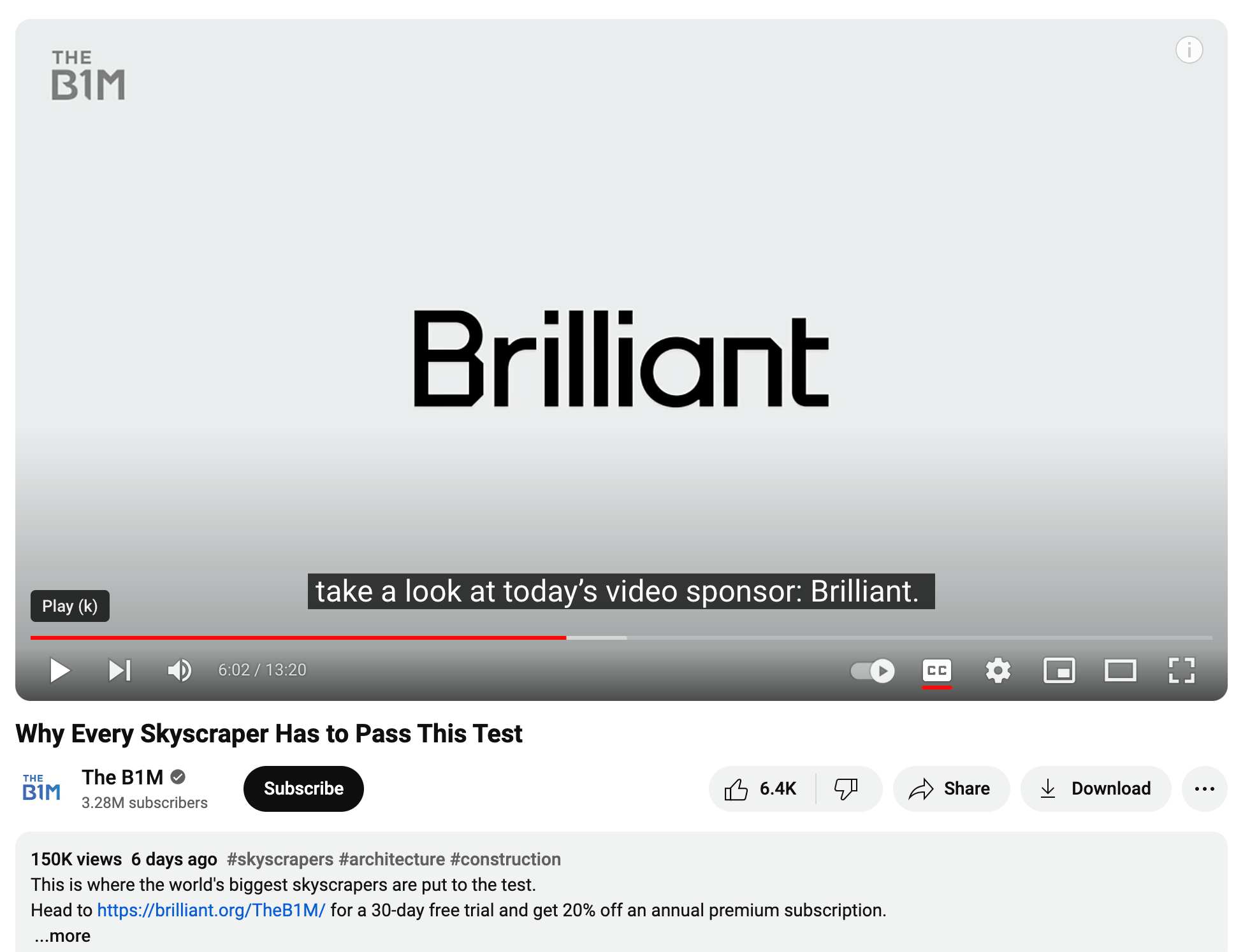
2. Amazon: LinkedIn engagement
Amazon is the world’s biggest online retailer in terms of revenue. It is active on various social media platforms, including LinkedIn, where it frequently posts positive stories about employees, events, and business updates.
Below is a sample post celebrating an Amazon employee competing in a bodybuilding competition:
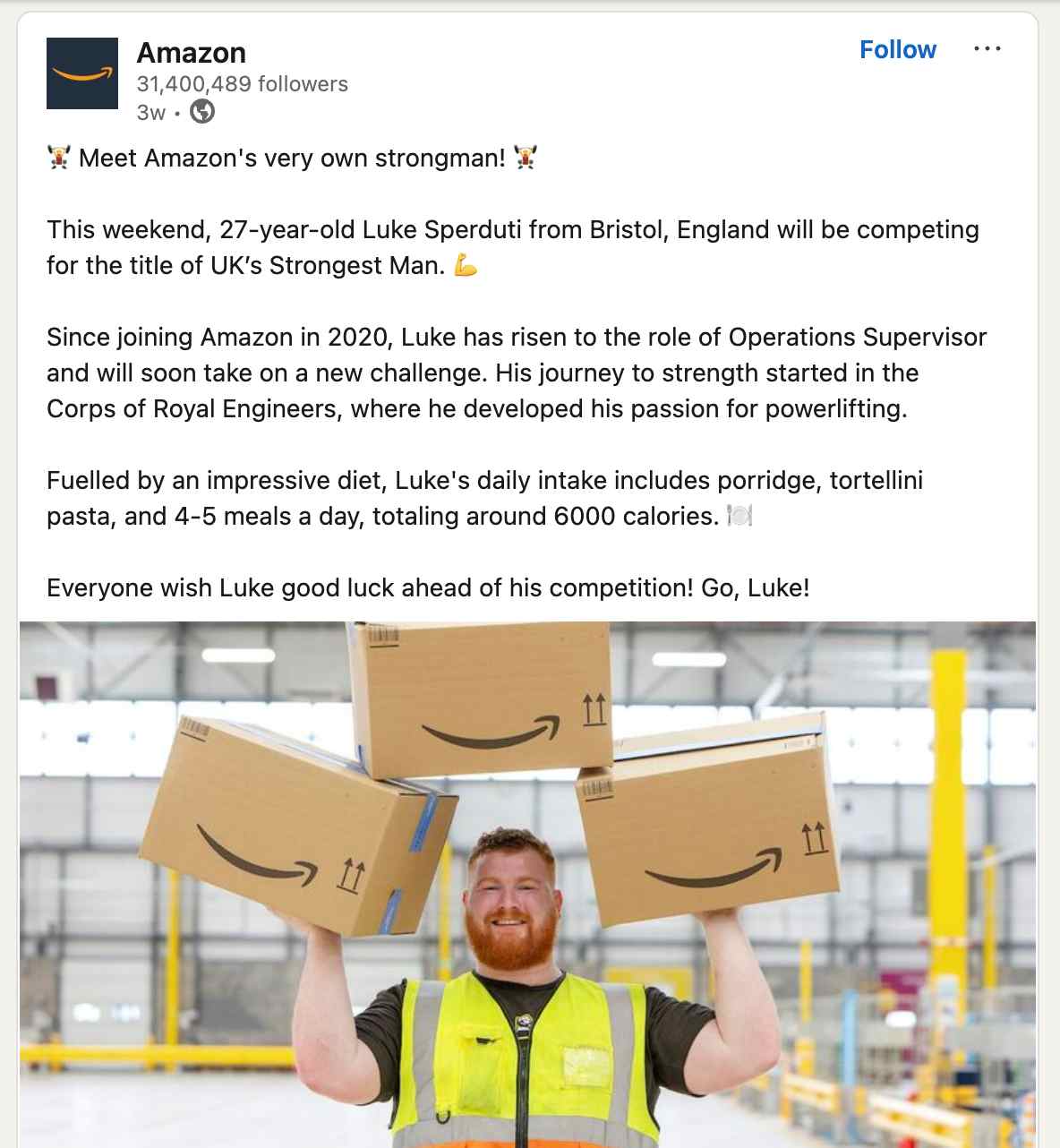
Below is another post celebrating a high-ranking technical employee’s achievements:
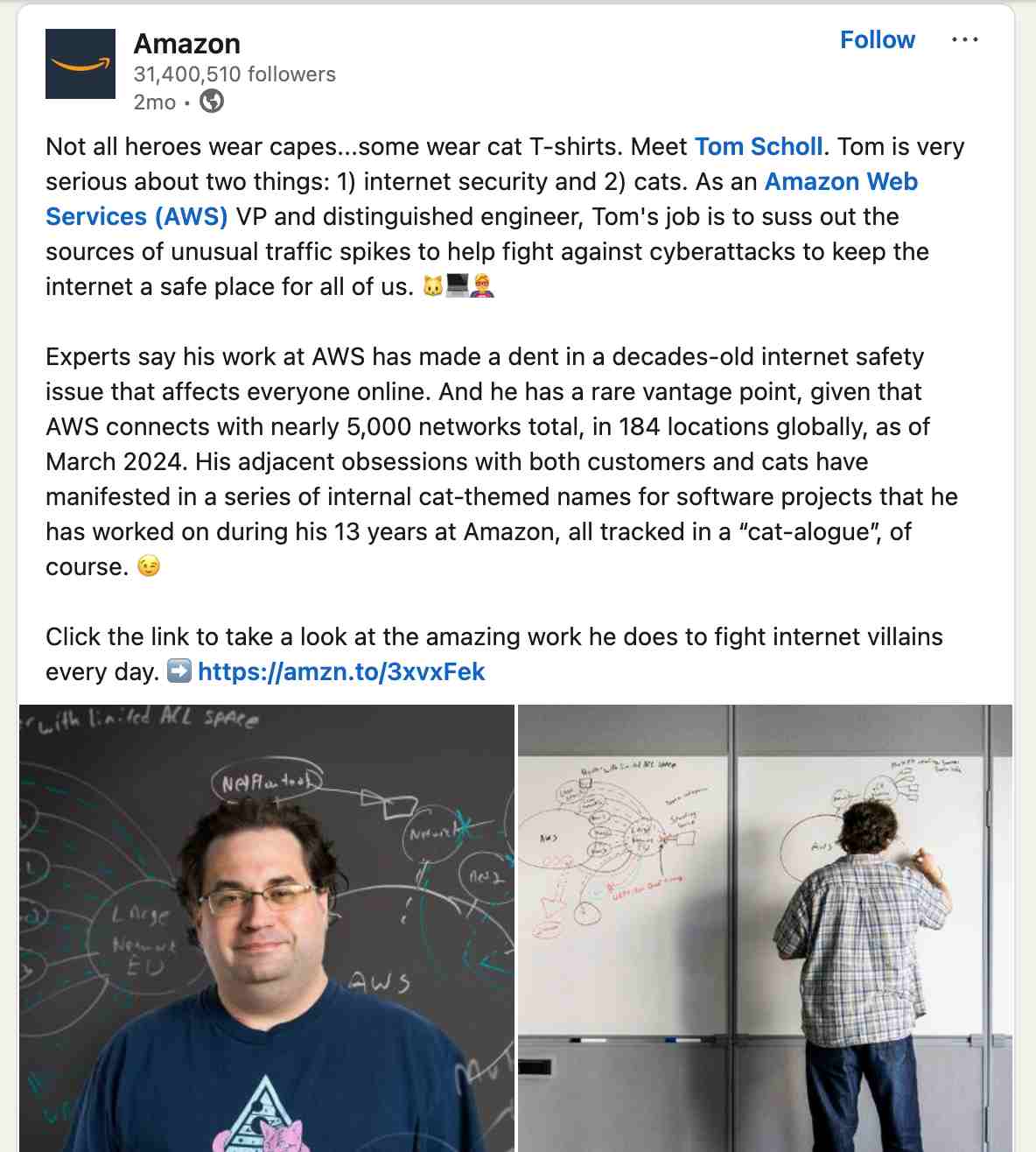
These LinkedIn posts drive traffic to Amazon’s Careers page, which, in turn, helps the company recruit the best employees to keep its business growing.
How to optimize your social media profile?
1. Use a simple username
Your social media username should be unique and easy to remember. Preferably, the name should include a relevant keyword in your niche. It should be unique, short, and easy to remember. If you’re out of ideas, you can try Hootsuite’s username generator to help you get the perfect name.
2. Use a high-quality profile picture
Every social media profile needs a high-quality profile picture, ideally your brand’s logo. Different social platforms have different profile picture dimensions:
- Facebook: 170 x 170 px
- Instagram: 110 x 110 px
- X: 400 x 400 px
- TikTok: 20 x 20 px
- YouTube: 800 x 800 px
- LinkedIn: 400 x 400 px
Use the same profile picture on different social platforms while adhering to the recommended dimensions. This way, someone who follows your brand on one platform can easily recognize it on another.
3. Write a descriptive bio
Your social media bio should clearly describe your business and value proposition. Anyone should be able to understand your business at a glance. State what your company does and use relevant keywords. Always check for typos and grammatical errors to avoid looking unprofessional.
4. Optimize social media for SEO
Treat your social media page like a website and optimize every part of it for search engines. This is important because search engines often suggest social media profiles in response to user queries. Optimizing your social media page increases the likelihood of appearing in search results.
- Write your website’s URL in your bio
- Use relevant hashtags and keywords in your bio
- Include your contact details and location, especially if you have a physical store
- Use simple handles people can easily remember
How to monetize social traffic?
1. Affiliate marketing
Affiliate marketing involves promoting products in exchange for commissions. If you have a sizeable following in your niche, you can recommend products to your followers with clear reasons why those products are worthwhile. Some followers will convert into customers, and you’ll collect a commission for each conversion. Affiliate marketing is one of the most effective Instagram monetization methods.
2. Sponsored posts
You can charge brands to create sponsored content showcasing their products. It can be a photo, story, or long-form video. Many YouTube creators earn most of their revenue via sponsored content, e.g., a travel vlogger posting a video sponsored by an airline. Sponsored content is also a key part of Facebook monetization.
3. Display ads
You can place display ads on your website and use your social media profile to drive traffic to this page. Finding an ad network that serves high-quality ads in your niche is the key. Fortunately, you have that in Adsterra.
Adsterra gives publishers access to a network of 15,000+ high-quality advertisers across various niches like iGaming, Utility, VPN, and E-commerce. With over $87 million in annual payouts to publishers, Adsterra provides ample opportunities to monetize your social traffic.
4. Smartlink
Smartlink is a creative monetization option Adsterra offers. It involves placing ad links on specific keywords. Adsterra’s smart algorithms determine the best keywords to place ads whenever someone opens your web page. You can send social traffic to your website and make money when visitors click the Smartlinks.
Conclusion
SEO and social media marketing complement each other. Typical SEO strategies, such as including relevant keywords and using high-quality images, boost social media engagement. We’ve explained how SEO and social media marketing work in tandem and how to monetize the increased social traffic.
The most crucial aspect of monetization is choosing the right ad network with reputable advertisers and flexible ad formats. Fortunately, Adsterra offers just that, helping you earn higher revenues from your SEO and social media marketing efforts.
